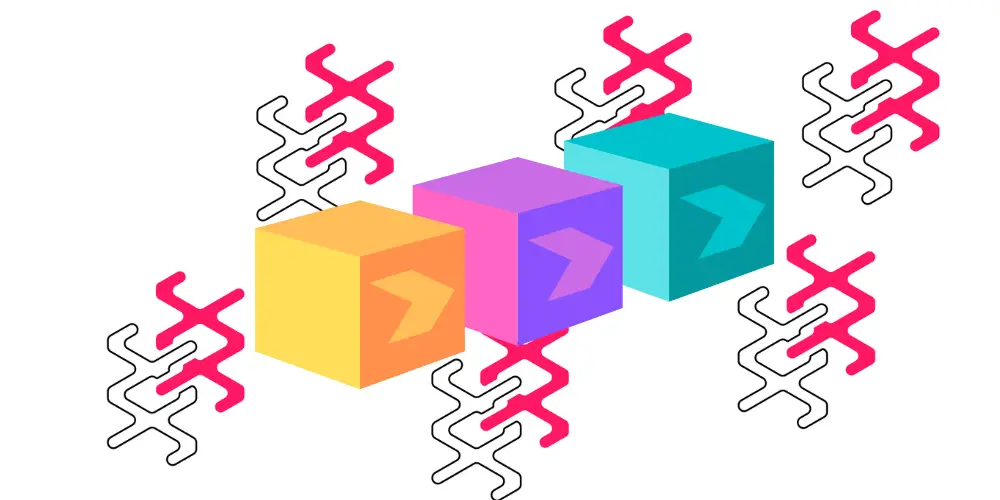Welcome to the Web3 world, where digital finance and applications are shown in a revolutionary way through the fusion of blockchain technology, cryptocurrencies, and a pioneering spirit. Are you overwhelmed by the wealth of terms in the Web3 world that you don’t understand? Are those slangs barriers for you to learn about Web3? Don’t worry! We’re here to explain the obscure terms to guide your learning. Today, we're diving into an innovative development in the world of Web3: [Substrate].
Substrate is a modular, flexible framework for building custom blockchains. Developed by Parity Technologies, Substrate provides developers with the tools and libraries necessary to create optimized, application-specific blockchains from the ground up. It is designed to enable rapid development and deployment of decentralized networks, facilitating the creation of new blockchain applications with ease and efficiency.
Substrate's architecture is composed of several key components that allow developers to build customized blockchains:
●Runtime Module Library (FRAME): FRAME (Framework for Runtime Aggregation of Modularized Entities) is a set of modules (called "pallets") that provide essential functionalities like consensus mechanisms, governance, staking, and token issuance. Developers can use existing pallets or create their own to meet specific requirements.
●Consensus Layer: Substrate supports multiple consensus algorithms, including Proof of Stake (PoS) and Proof of Work (PoW), allowing developers to choose the most suitable consensus mechanism for their blockchain.
●Networking: Substrate includes robust networking capabilities to ensure secure and efficient communication between nodes.
●Database: The framework uses a high-performance, flexible database to store blockchain data.
1.Custom Blockchain Development: Substrate provides a comprehensive toolkit for building custom blockchains tailored to specific use cases. 2.Modular Design: Developers can choose from a library of pre-built modules or create their own, enabling rapid development and deployment of blockchain applications. 3.Interoperability: Substrate-based blockchains can easily integrate with the Polkadot network, allowing for seamless interoperability and shared security. Custom Blockchain Solutions
Description: Substrate allows developers to create blockchains tailored to specific applications, whether they are financial services, supply chain management, gaming, or any other use case.
Examples: Acala Network, a DeFi hub on Polkadot, is built using Substrate to provide decentralized finance applications with high efficiency and interoperability. Advantages: Enables rapid development and deployment of application-specific blockchains with customizable features.
Description: Substrate facilitates the creation of blockchains that can easily integrate with other networks, especially the Polkadot ecosystem.
Examples: Moonbeam, a smart contract platform on Polkadot, uses Substrate to provide Ethereum-compatible smart contract capabilities with interoperability within the Polkadot network.
Advantages: Promotes interoperability and shared security across different blockchains, enhancing the overall ecosystem.
Decentralized Applications (dApps)
Description: Developers can use Substrate to build decentralized applications that leverage custom blockchain features tailored to their needs.
Examples: Chainlink, which provides decentralized oracles, can integrate with Substrate-based blockchains to offer secure and reliable data feeds for smart contracts.
Advantages: Offers a high degree of flexibility and customization for dApp development, ensuring optimal performance and functionality.
Importance in Web3 Ecosystem
Substrate plays a pivotal role in the Web3 ecosystem by providing a flexible and powerful framework for blockchain development. It enables the creation of custom blockchains that can seamlessly integrate with other networks, particularly Polkadot, thereby enhancing interoperability and fostering innovation. Substrate's modular design and comprehensive toolset empower developers to build robust and efficient decentralized applications.
User Experience and Innovations
Substrate focuses on delivering a seamless user experience through its intuitive development environment and extensive documentation. Innovations such as the FRAME framework and support for multiple consensus mechanisms ensure that developers can build and deploy custom blockchains efficiently. Substrate also emphasizes security and performance, making it a preferred choice for blockchain development.
Despite its advantages, Substrate faces challenges such as ensuring widespread adoption, maintaining a high level of security, and providing continuous support and updates. The complexity of blockchain development requires ongoing education and community engagement to ensure developers can fully leverage Substrate's capabilities.
Substrate represents a significant advancement in blockchain technology, offering a flexible and powerful framework for custom blockchain development. By enabling rapid development and deployment of decentralized applications, Substrate is poised to play a crucial role in the evolution of the Web3 ecosystem. Understanding and leveraging Substrate is essential for developers and stakeholders looking to build innovative and efficient blockchain solutions.

